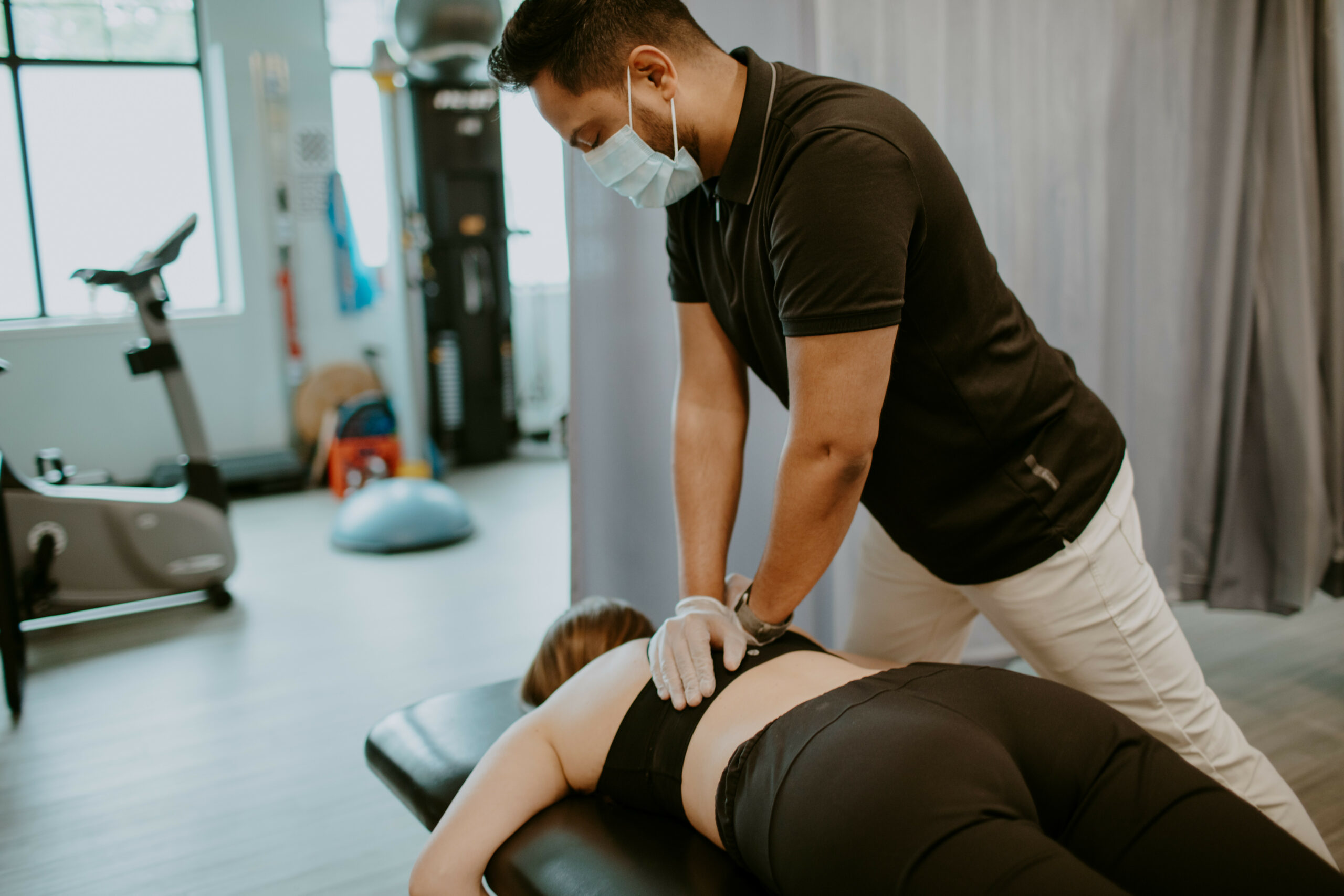Shoulder pain can be incredibly disruptive, especially when it’s caused by shoulder impingement syndrome (SIS). This condition is one of the leading causes of shoulder pain and can significantly limit your ability to perform even the simplest daily tasks.
The good news? Manual therapy is an effective, non-invasive treatment option that can help relieve your symptoms and restore proper shoulder function.
At Surrey Hwy 10 Physiotherapy & Massage Clinic, we use evidence-based manual therapy techniques to help our patients regain mobility and reduce pain.
Understanding Shoulder Impingement Syndrome
Shoulder impingement syndrome occurs when the tendons of the rotator cuff and the bursa become compressed or irritated in the subacromial space, which is the area between the top of the shoulder blade (acromion) and the humerus. This often leads to pain and inflammation, particularly when raising your arm overhead.
The causes of shoulder impingement vary but typically include repetitive overhead movements, poor posture, or muscle imbalances. Symptoms include sharp or aching pain when moving the shoulder, especially when lifting your arm, as well as a feeling of weakness or reduced range of motion. If left untreated, it can progress to more serious conditions, such as rotator cuff tears.
What is Manual Therapy?
Manual therapy is a specialized, hands-on treatment method used by physiotherapists to improve movement, reduce pain, and enhance function in the muscles and joints. It involves a range of techniques, including:
- Joint Mobilization: Gentle movements applied to stiff or immobile joints to increase their range of motion.
- Soft Tissue Manipulation: Techniques that target muscles, tendons, and ligaments to release tightness, reduce tension, and alleviate pain.
- Myofascial Release: A method aimed at releasing restrictions in the connective tissue surrounding muscles, allowing for smoother, pain-free movement.
- Stretching: Manual stretches applied by the therapist to improve flexibility in tight muscles and soft tissues.
How Manual Therapy Targets Shoulder Impingement
Manual therapy is highly effective in treating shoulder impingement by addressing several key factors contributing to the condition:
- Restoring Joint Mobility: Limited movement in the shoulder, scapula, or even the thoracic spine can worsen impingement symptoms. By using joint mobilizations, a physiotherapist can help improve the range of motion in these areas, allowing the shoulder to move more freely and efficiently.
- Releasing Muscle Tension: Tight muscles in and around the shoulder, such as the rotator cuff, trapezius, and deltoid muscles, can exacerbate impingement. Soft tissue manipulation and myofascial release techniques help alleviate this tension, reducing the compression on tendons and improving overall shoulder function.
- Improving Shoulder Biomechanics: One of the main goals of manual therapy is to correct any biomechanical issues that may be contributing to shoulder impingement. By improving the way the shoulder joint moves and functions, manual therapy reduces the likelihood of further irritation or damage to the tendons and bursa.

Visit Our Top Rated Physio Clinic in Surrey
Come visit the team at Surrey Hwy 10 Physiotherapy & Massage Clinic for same-day physio appointments.
Evidence Supporting Manual Therapy for Shoulder Impingement
Research strongly supports the use of manual therapy in combination with other treatments, such as strengthening and stretching exercises, to effectively manage shoulder impingement syndrome.
- Pain Relief: Studies show that manual therapy, when combined with exercises, significantly reduces pain in patients with shoulder impingement syndrome. By addressing both joint restrictions and muscle tightness, patients experience faster and more lasting pain relief (Tauqeer et al., 2024; Silveira et al., 2024).
- Improved Range of Motion: One of the key benefits of manual therapy is its ability to restore mobility. Research indicates that techniques like joint mobilizations help increase shoulder movement, especially in the scapular region, which is crucial for proper shoulder mechanics (Tauqeer et al., 2024).
- Enhanced Functionality: Patients with shoulder impingement often suffer from weakness and limited movement. By improving tissue flexibility and reducing pain, manual therapy enhances shoulder strength and function, allowing patients to return to their daily activities with greater ease (Tauqeer et al., 2024).
At Surrey Hwy 10 Physiotherapy & Massage Clinic, our physiotherapists use these techniques to provide targeted, personalized care for patients suffering from shoulder impingement. We combine manual therapy with a tailored exercise program to help you achieve long-term results.
Why Choose Manual Therapy at Surrey Hwy 10 Physiotherapy & Massage Clinic?
Our clinic is dedicated to providing expert, evidence-based care to all our patients. By integrating manual therapy with a comprehensive rehabilitation program, we can address the underlying causes of shoulder impingement and help you achieve faster recovery. Whether you are experiencing acute pain or managing chronic symptoms, our skilled physiotherapists will work closely with you to develop a treatment plan that meets your unique needs.
Conclusion
Manual therapy is a powerful tool in the treatment of shoulder impingement. By restoring mobility, releasing tension, and improving biomechanics, this hands-on approach can significantly reduce pain and enhance shoulder function. If you’re struggling with shoulder pain, visit Surrey Hwy 10 Physiotherapy & Massage Clinic to explore how manual therapy can help you regain control of your shoulder health.
Ready to take the next step? Book an appointment today at Surrey Hwy 10 Physiotherapy & Massage Clinic and start your journey to pain-free movement. We offer 24/7 online booking.
References
- Tauqeer S, Arooj A, Shakeel H. Effects of manual therapy in addition to stretching and strengthening exercises in patients with shoulder impingement syndrome. BMC Musculoskelet Disord. 2024;25:192. doi:10.1186/s12891-024-07294-4
- Silveira A, Lima C, Beaupre L, et al. Shoulder specific exercise therapy is effective in reducing chronic shoulder pain: A network meta-analysis. PLoS One. 2024;19(4)
. doi:10.1371/journal.pone.0294014